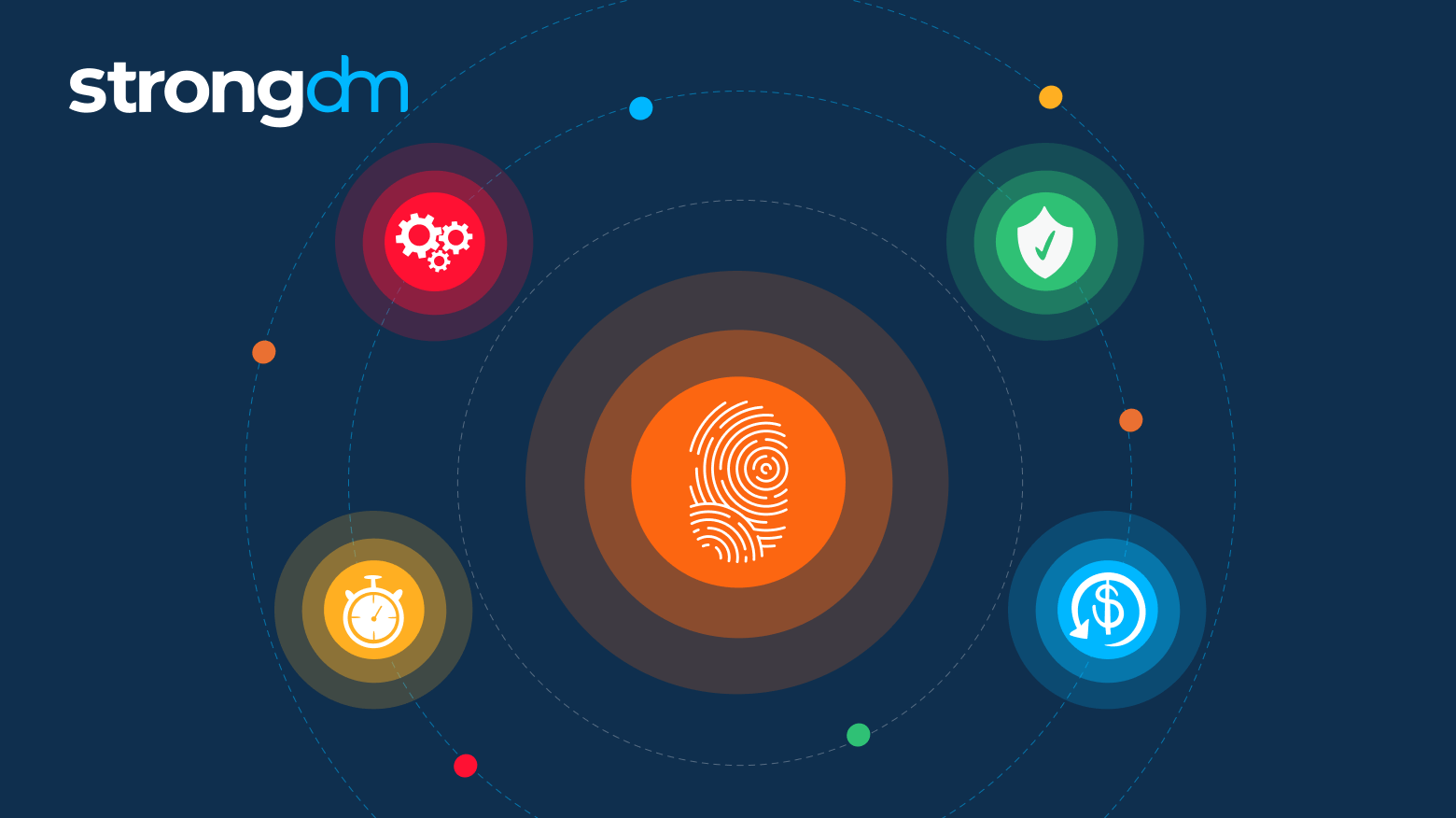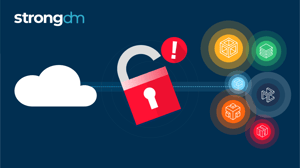What Is User Provisioning? How It Works, Best Practices & More


Written by
John MartinezLast updated on:
June 25, 2025Reading time:
Contents
Built for Security. Loved by Devs.
- Free Trial — No Credit Card Needed
- Full Access to All Features
- Trusted by the Fortune 100, early startups, and everyone in between
User provisioning is a key element of a strong security posture. Without the ability to define what access each user should have, you will have great difficulty tracking and auditing user actions, opening your systems to potential risk. By ensuring only authorized individuals have appropriate access to specific applications, features, and data, you protect your company, customers, and partners from cyber attacks.
What is User Provisioning?
User provisioning is the process of managing user access within an enterprise. It involves creating, managing, and deprovisioning user accounts and access rights across various systems and applications. This includes setting up accounts, assigning roles and permissions, and managing identities.
Effective user provisioning ensures that your employees have the appropriate access to the tools, systems, applications, and data they need while maintaining security and compliance. By automating this process, you can enhance efficiency and reduce the risk of unauthorized access.
Types of User Provisioning
The types of user provisioning include:
- Automated provisioning: Automates creating and managing user accounts based on predefined rules and policies.
- Manual provisioning: Involves manually creating and managing user accounts, which can lead to delays and errors.
- SCIM provisioning: Standardizes and automates the exchange of user identity information across different IT systems, enabling efficient user management.
- Self-service provisioning: Allows users to request access to resources through a self-service portal, which streamlines the approval process.
- Role-based provisioning: Assigns access based on predefined roles, ensuring users have the appropriate level of access based on their job functions.
Each type of user provisioning has unique benefits and potential drawbacks. Automated provisioning can significantly reduce your administrative overhead and minimize human errors, making it ideal for large organizations with complex IT environments. However, it requires robust policies and thorough testing to ensure accuracy. Manual provisioning, while possibly more flexible, is time-consuming and prone to mistakes — it is rarely recommended except in very isolated situations.
SCIM provisioning provides a standardized approach, facilitating interoperability between diverse systems, but it may require you to invest in compatible infrastructure. Self-service provisioning empowers users and accelerates access approval, but you need strict governance to prevent misuse. Role-based provisioning offers consistency and security by aligning access with job roles, but it demands careful role definition and ongoing management to remain effective.
Understanding these nuances helps you choose the most suitable provisioning method — or combine multiple approaches — to optimize your access management strategy.
💡Dive deeper: Automated provisioning makes user access management much easier and more comprehensive. Learn more about it (and its usage at StrongDM) here.
User Provisioning Challenges
As your organization grows, managing user access becomes increasingly complex. Ensuring access policies are consistently enforced across all systems is critical to maintaining security and compliance. Delays in provisioning can hinder productivity and create security vulnerabilities.
One significant challenge you will likely face is scalability. As your number of users and applications increases, manually managing access rights will become impractical and error-prone. You must implement automated solutions to handle large-scale provisioning efficiently. These solutions must integrate seamlessly with existing systems and be flexible enough to adapt to changing requirements.
Another challenge is maintaining consistent policy enforcement. It’s difficult to maintain uniformly applied access policies when using multiple systems and applications. Inconsistent enforcement can lead to unauthorized access and potential data breaches. Automated provisioning tools can help you address these issues by standardizing processes and reducing the risk of human error.
💡Make it easy: Simplify user provisioning by streamlining the provisioning process. Unlike traditional methods, StrongDM ensures consistent policy enforcement across all systems, reducing the risk of human error and unauthorized access.
The User Provisioning Process (How It Works)
The user access provisioning process involves several steps, from initial setup to full deployment:
- Initial Setup: Define roles and access levels based on job functions.
- Request and Approval: Users request access to resources, and managers approve these requests based on established policies.
- Provisioning: Manual or automated systems create user accounts and assign the necessary permissions.
- Monitoring and Auditing: Regularly review access logs and perform audits to ensure compliance and detect any unauthorized access.
- De-provisioning: Remove access for users who no longer need it, such as former employees or users changing roles.
Identity Access Management (IAM) systems are commonly used to streamline and automate this process, ensuring that access is managed consistently across your organization.
💡Make it easy: Simplify automates the entire user access provisioning process, from initial setup to de-provisioning — it’s as easy as one click. This reduces the risk of unauthorized access and builds security and efficiency.
Best Practices for Effective Account Provisioning
Account provisioning has changed to reflect the growing complexity and dynamic nature of modern IT environments. Over time, strategies have shifted from basic access control to sophisticated policies and scalable solutions that address both security and operational efficiency. Here are some best practices to consider:
Create Clear and Comprehensive Provisioning Policies
Develop a detailed account provisioning policy that defines who can request access, the steps for approval, and the criteria for granting permissions. This policy should cover every aspect of access management to ensure consistency and security:
- Procedures detailing who can request access and how
- Steps in the approval workflow
- Definition of access levels and roles
- Onboarding and offboarding processes
- Roles and responsibilities of those involved in the provisioning process
Regularly update the policy to reflect any changes in organizational structure or compliance requirements and train employees on the importance of user provisioning and the proper procedures.
Conduct Regular Audits and Maintain Compliance
Schedule regular audits to review access permissions and detect anomalies or unauthorized activities. Audits should be thorough and systematic, covering all systems and user accounts.
Use the audit findings to refine and improve your provisioning processes and schedule reviews with senior management to maintain accountability. Implementing automated tools can also streamline the auditing process and reduce manual errors. Additionally, ensure that any identified issues are promptly addressed and documented to prevent future occurrences and to maintain compliance with regulatory standards.
Ensure Scalability and Flexibility
Design your provisioning system to adapt to changes in your organization. Your access management needs will evolve as your business grows and require a system that can scale and remain flexible. Implement solutions that integrate with new technologies and platforms as they are adopted and plan for future growth by regularly assessing and updating your provisioning system to meet emerging challenges.
You’ll also want to make sure the system supports easy role-based access control to simplify management as new roles are created. If you involve stakeholders from various departments in the design process, you’ll be better positioned to address diverse needs and ensure comprehensive coverage.
💡Make it easy: StrongDM’s centralized platform manages access requests and approvals, ensuring all steps are documented and consistent. The intuitive interface and automated updates make it easy to keep your policies current and aligned with organizational changes.
User Access Provisioning Use Cases (Real-world Examples)
Here are some real-world examples of how companies have benefited from efficient account provisioning solutions:
CO2 AI
CO2 AI, a sustainability management platform, significantly improved its account provisioning process by implementing StrongDM to enable self-service access management. This allowed users to gain access quickly and securely without manual intervention, reducing the time required by 85% and completely eliminating shared credentials.
This transformation highlights how effective user access provisioning can enhance security and efficiency, ensuring users have the necessary access while maintaining strict control over credentials.
💡Learn more: CO2 AI reduced provisioning time by 85% and completely eliminated shared credentials. Read the CO2 AI case study.
Axos Financial
Faced with the challenge of managing over 200,000 database permissions annually, Axos Financial turned to StrongDM for a more streamlined and secure approach. StrongDM's role-based access control allows Axos to consolidate multiple access requests into a single request, enhancing both security and operational efficiency. This example demonstrates how robust user provisioning processes can simplify access management and ensure compliance in highly regulated environments.
💡Learn more: Axos implemented a Role-Based Access (RBAC) approach to streamline the provisioning process and reduce the number of access requests per database. Read the Axos case study.
Zefr
Zefr, a company focused on responsible marketing, previously had admins spending hours each week on provisioning and decommissioning users. After adopting StrongDM, the company now spends just 30 minutes on this task and has slashed its administrative overhead by 88%. Zefr's experience underscores the benefits of automating account provisioning, reducing manual effort, and integrating best practices into IT operations, all while enhancing security.
💡Learn more: Zefr reduced the provisioning and decommissioning time for users from four hours to 30 minutes per week. Read the Zefr case study.
Effective User Provisioning Through Automation
Rather than manually assigning rights for each user and system, automated provisioning enables access automatically based on preset rules allocated to predefined roles or groups. This process is an integral part of identity and access management (IAM) and privileged access management (PAM), particularly during employee onboarding and offboarding.
Automated systems streamline provisioning by taking the manual labor out of managing user access to each individual application when a new employee joins or someone changes roles. Automating user access provisioning tasks allows your IT team to focus on other important initiatives. Pre-configured settings based on an employee's role ensure that access is granted or revoked efficiently, enhancing overall security and operational efficiency.
StrongDM ensures consistent policy enforcement across all systems, reducing the risk of human error and unauthorized access. Worried about streamlining your user provisioning process? Book a demo today to see how StrongDM can enhance your security and efficiency.
Next Steps
StrongDM unifies access management across databases, servers, clusters, and more—for IT, security, and DevOps teams.
- Learn how StrongDM works
- Book a personalized demo
- Start your free StrongDM trial

Categories:

About the Author
John Martinez, Technical Evangelist, has had a long 30+ year career in systems engineering and architecture, but has spent the last 13+ years working on the Cloud, and specifically, Cloud Security. He's currently the Technical Evangelist at StrongDM, taking the message of Zero Trust Privileged Access Management (PAM) to the world. As a practitioner, he architected and created cloud automation, DevOps, and security and compliance solutions at Netflix and Adobe. He worked closely with customers at Evident.io, where he was telling the world about how cloud security should be done at conferences, meetups and customer sessions. Before coming to StrongDM, he lead an innovations and solutions team at Palo Alto Networks, working across many of the company's security products.
You May Also Like




